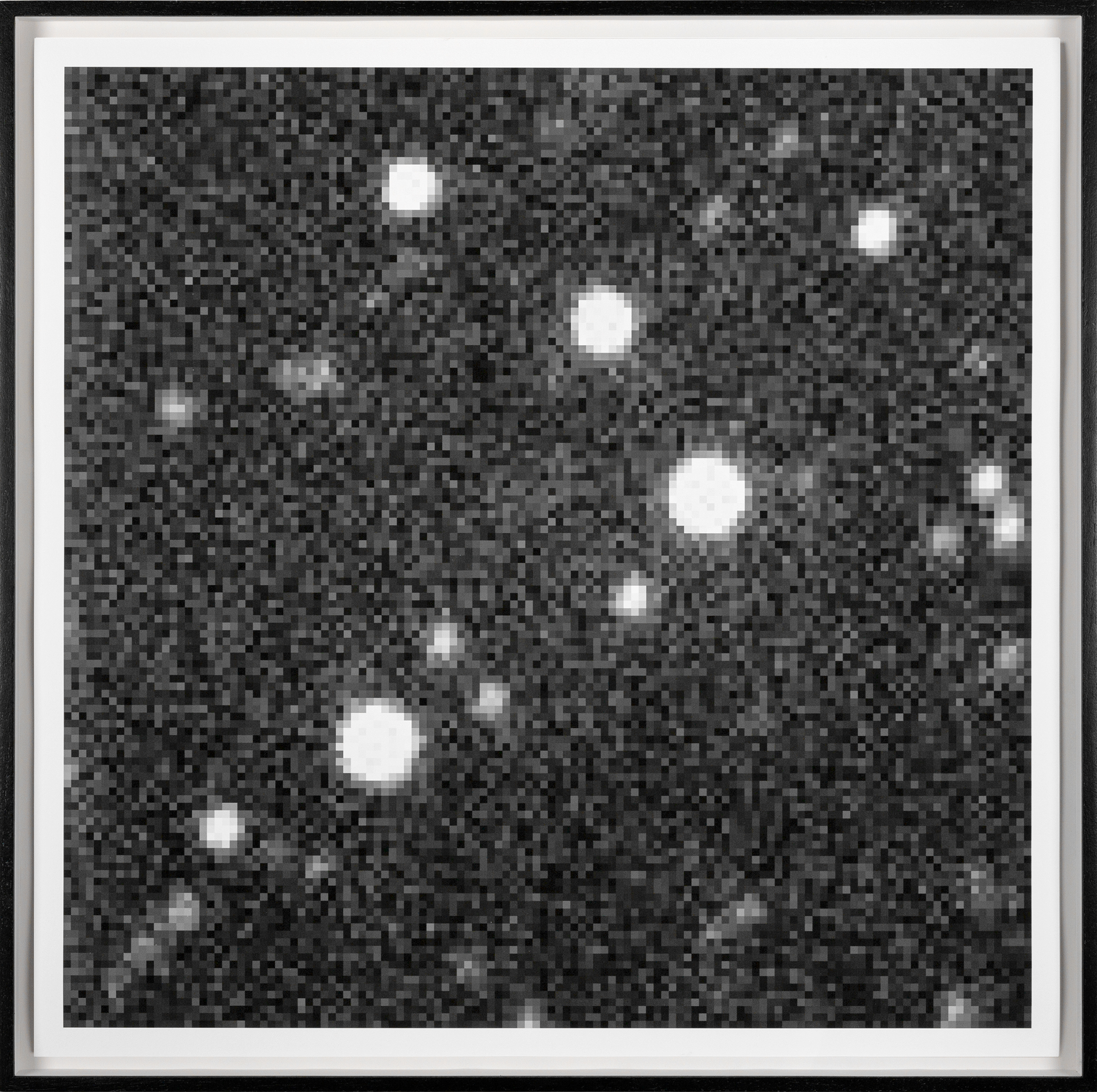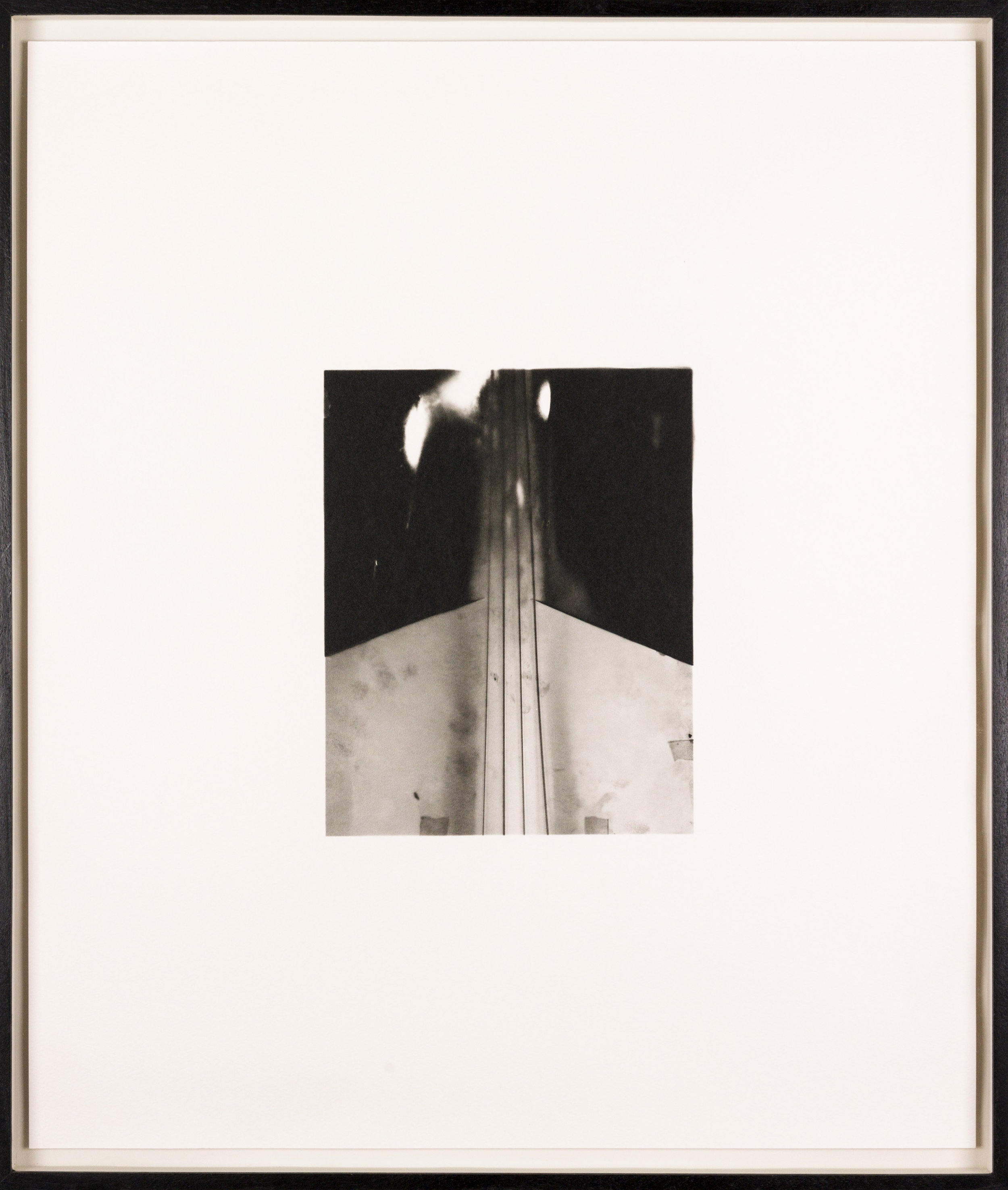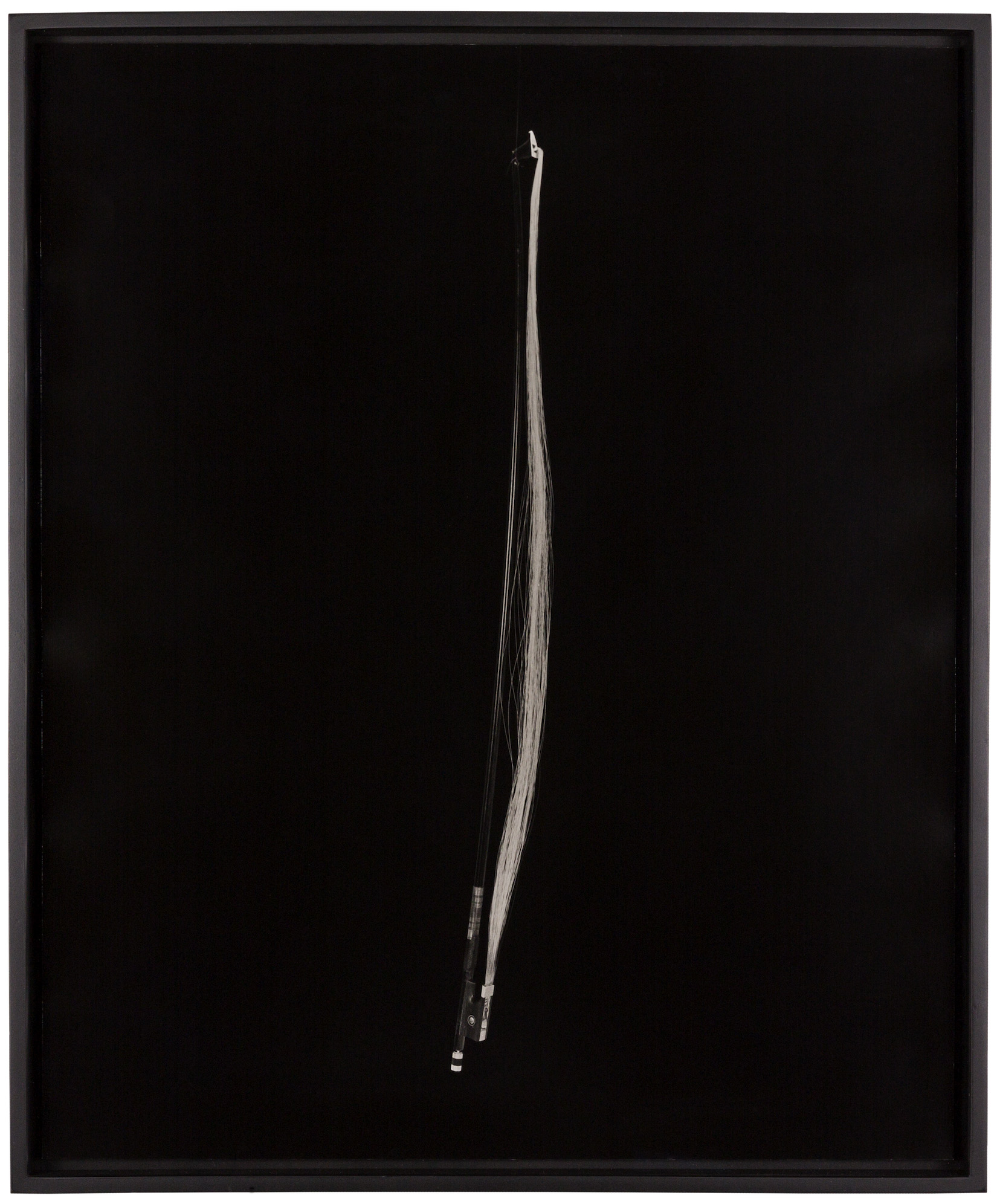Invisible Motifs
A SOLO EXHIBITION BY MIA THOM | 31.01.2019 - 18.02.2019
Listening in the Darkness (2019)
Catalogue Essay by Natasha Norman
The darkness is so complete I suspect it is synthetic. There are so few instances in modern life that one is confronted with a complete lack of light. If your eyes are open or closed, it makes no difference to the velvet quality of the blackness. A voice calls out from the darkness, only it isn’t a human voice, it’s the song of a string quivering against a wooden soundboard on the shoulder of a violin player. A deeper note responds from bow on cello, elsewhere. I can sense the space opening up in my consciousness. The sounds from the two performers probe the darkness, describing the corners of the room with an aural sight. At times the frequencies of performed notes resonate with the material of the room itself. Space expands and contracts beyond physical dimensions as sonic resonances make possible a new experience of place.
Mia Thom is a unique interdisciplinary artist in that she exploits the material possibilities of sound to challenge the way in which we access knowledge. She is inspired by researchers who recognise the ways in which sound can alter the perspectives we hold of objects, spaces and experiences. She cites the work of Salomé Voegelin who bases her academic practice on the ways in which sound can “make visible, in a new light” by way of changing the normal mode of access to an idea or experience. Thom introduces this idea throughout the exhibition in photographic, performance and video works through her meticulous interrogation of the fundamental processes of each artistic form.
Her photographic works Improvisation (series i-iii) exist as both long exposure photographs and a type of visual musical score. The traces seen were made by attaching multiple lights to a violin and viola that were played by musicians improvising a score together in the dark. By playing in the dark, the performers are forced to rely on a more intuitive or ‘felt’ response to each other’s physical presence. Autophony is another example of the way Thom challenges traditional Western types of musical form. Thom began working with trumpeter, Hayley Joorst, a month before the final recording, showing her the image of an Angel’s Trumpet Flower as a starting point for the work. Joorst’s final recording was performed blindfolded in a darkened space in response to the memory of the image. She applies extended techniques (multiphonics: singing and playing at the same time) to her interpretation, exploring the trumpet as a sonic object tied to breath, mouth and voice, not necessarily as a musical instrument. Thom says the work aims to “disrupt the expectations of the trumpet’s usual announcing timbre to communicate something of the body and the extralinguistic.” As the title suggests, the attention of the piece is on autophony – to hear yourself breathing – which marks a particular turn away from the public act of performing with a music instrument to a more contemplative and embodied reflection on sound and breath. In a similar process of reorientation, the visual works on exhibition are primarily produced through sonic processes, inviting the viewer to listen to images.
The principle performance piece, Invisible Motifs, culminates Thom’s interests in re-orientating modes of accessing both art and music. The work begins with the room itself, which Thom conceives of as a large instrument. By using mathematics and sonic tests she began by discovering the resonant frequencies of the room. These become the base data from which she developed a score with composer, Lucy Strauss. Thom’s collaboration with Strauss was based on an exchange of ideas, sounds and research. The final score is a remarkable achievement in itself, providing both structure and complete freedom for the chosen performers, Mia Thom on violin and Jess Scott on cello.
Instructions such as ‘repeat this rhythm as you wish, keeping a steady pulse’ or ‘repeat until audio cue on speakers’ or ‘choose to play each box when you think it would be appropriate’ demonstrate a score with a remarkable capacity to accommodate both the room itself and the experience of the performer. As a work in and of itself, it displaces traditional Western musical modes shifting a focus away from the specificities of the discipline of music, to an interest in what Salomé Voegelin calls the sound-music continuum. The continuum (not the hierarchy) of music and noise is consciously exploited to provide a sonic experience rather than a discipline-specific form of ‘understanding.’ Performed in the dark, the work enters another dialogue with the embodied experience of the performers themselves. Added to that the interspersed audience members and the entire concert hall model shatters into a deeply personal encounter with sound, space and body. Situating the performance in darkness activates an awareness of the invisibility of sound, a means of exposing the limits of visual certainty. As Voegelin writes, “The sonic material is the groundlessness of our concrete experience that does not negate the visible but reveals its limits by opening its depth.” (Voegelin. 2014. P87)
Thom’s exhibition introduces us to experiences of speculative realism – a philosophical way of thinking that does not rely on only one framework for reality. For every audience member, the experience of Invisible Motifs will depend on their position to each performer and their own personal associations that listening to the score in the dark will evoke in both body and mind. By evading the primacy of sight, Thom foregrounds the variants of understanding and engagement that an artwork can engender. Speculative realism attempts to make us “think beyond the limits of what we, as human beings, were long considered able to think, speculating instead about the nature of the non-human and what such thinking might provide for the many issues we face in our contemporary moment.” (Beier and Wallen. 2017. P149) As such, the work encompasses various recordings of machinery that are played through speakers during the live performance as well as the resonant frequencies of the room itself, challenging the audience to extend our awareness of place to encompass our own bodies and well as experiences beyond our bodily reality.
Thom works exclusively with women musicians in her performances. Her interest in interrogating the visual hierarchies of musical performance extends to this gender politic. The disembodied voice is a recurring theme throughout the exhibition. Whether it is the voice of the musical instrument, the singer in the dark, the recordings of a telescope looking at a stellar occultation of Pluto, the recordings of the non-human voices of darkroom machinery, Thom’s voices mark an ethical concern with the authority of voice: who has the right to speak. Darkness similarly emerges as an important experience from which to challenge visibility: positioned as central to the sphere of the political, or what Judith Butler calls an ethical imperative. (Labelle. 2018. P29-30)
Invisible Motifs is an elegant soliloquy in ‘sonic possible worlds,’ an imaginative challenge to conventions of performance, audience and musical score. By listening in the darkness, Thom invites us to participate in the imagery, fantasies and projections of the acousmatic[1], inviting us into a deeper knowledge and vocabulary of the sonic world open to the speculations and hauntings of the unconscious.
Footnote:
[1] Acousmatic is a term from Brandon Labelle’s chapter ‘The Invisible’ in Sonic Agency. It refers to separating audible events from their particular contexts. (p37)
References:
Jessie Beier and Jason Walden. 2017. “Sound without Organs: Inhuman Refrains and the Speculative Potential of a Cosmos-Without-Us” in Sonic Thinking: A Media Philosophical Approach. (ed.) Bernd Herzogenrath. Bloomsbury Academic: New York. 135-158
Brandon Labelle. 2018. Sonic Agency: Sound and Emergent Forms of Resistance. MIT Press: Cambridge, Massachusetts.
Salome Voegelin. 2014. Sonic Possible Worlds: Hearing the Continuum of Sound. Bloomsbury: London.
Electromagnetic recording of a 74" telescope during a stellar occultation of Pluto conducted by astronomer Amanda Sickafoose at SAAO, Sutherland, South Africa.
Orignal score based on the performance room’s resonant frequencies, developed with local composer, Lucy Strauss. Performed by Mia Thom (violin) and Jessica Scott (cello), with sampled photographic sounds.
Full performance: +- 00:15:00
Trumpet player, Hayley Joorst, improvising blind-folded, exploring the instrument as a sonic object. This piece is a response to the image of the same title, as seen above.
.















